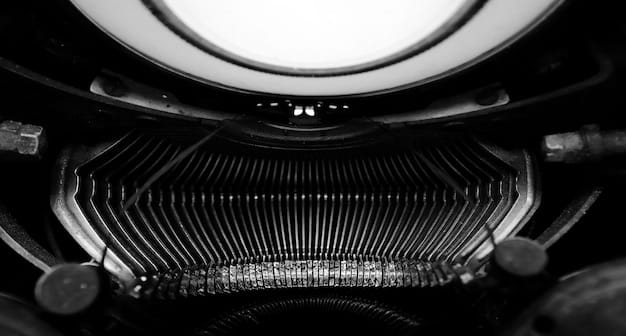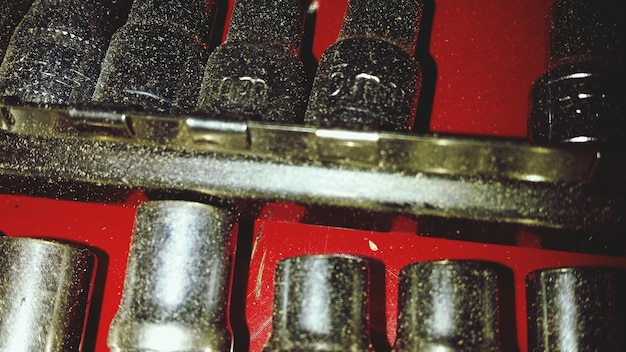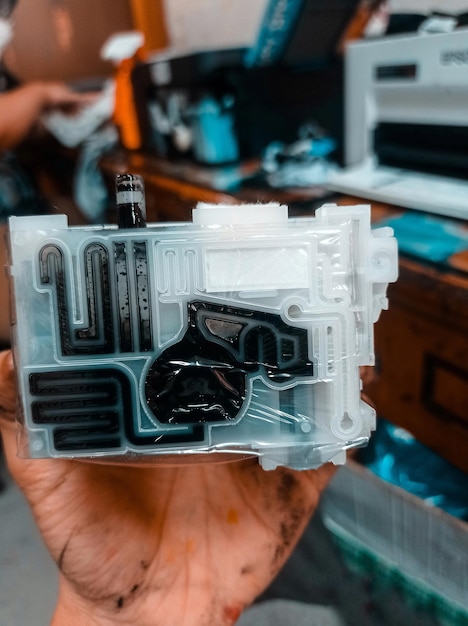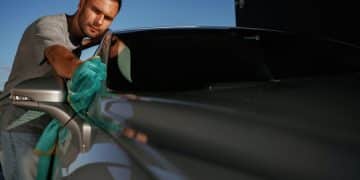Engine Bay Detailing: A Safe DIY Guide to Clean & Protect Your Engine

Engine bay detailing involves safely cleaning and protecting your vehicle’s engine components, enhancing its appearance and potentially improving its overall performance by preventing corrosion and overheating issues. This DIY guide provides step-by-step instructions for effective engine bay detailing.
Ready to give your car’s engine bay a sparkling makeover? Engine bay detailing might seem daunting, but with the right approach, tools, and safety precautions, you can achieve professional-level results in your own garage.
What is Engine Bay Detailing and Why is it Important?
Engine bay detailing is the process of thoroughly cleaning and protecting the engine compartment of a vehicle. This goes beyond a simple wipe-down; it involves carefully removing dirt, grime, oil, and other contaminants that accumulate over time.
While many car owners focus on the exterior and interior cleaning, the engine bay often gets neglected. However, a clean engine bay offers several benefits beyond aesthetics.
Benefits of a Clean Engine Bay
Keeping your engine bay clean isn’t just about appearances; it’s also about maintaining the overall health and performance of your vehicle. A clean engine bay allows for easier detection of leaks and potential problems.
- Improved Aesthetics: A clean engine bay significantly enhances the overall appearance of your vehicle.
- Easier Maintenance: A clean engine makes it easier to identify leaks and other potential problems.
- Prevents Corrosion: Removing dirt and grime reduces the risk of corrosion on engine components.
- Better Heat Dissipation: A clean engine runs cooler, improving its overall efficiency.
Ultimately, engine bay detailing not only makes your car look better but also contributes to its longevity and performance.

Essential Supplies for Engine Bay Detailing
Before you start detailing your engine bay, it’s essential to gather the necessary supplies. Having the right tools and products on hand will make the process smoother and more effective.
Here’s a list of essential supplies you’ll need:
Cleaning Products
Choose cleaning products specifically designed for engine bays. All-purpose cleaners, degreasers, and protectants are essential.
- Engine Degreaser: A powerful degreaser to remove stubborn oil and grease deposits.
- All-Purpose Cleaner: A versatile cleaner for general dirt and grime.
- Detailing Brushes: Various sizes for reaching tight spaces and delicate components.
- Microfiber Towels: Soft and absorbent towels for wiping down surfaces.
Selecting the right cleaning products is crucial for achieving a clean and well-protected engine bay without damaging any components.
Step-by-Step Guide to Engine Bay Detailing
Now that you have all the necessary supplies, it’s time to start detailing your engine bay. Follow these step-by-step instructions for a safe and effective cleaning process.
Remember, safety is paramount. Disconnect the battery and protect sensitive components before you begin.
Preparation
Before you start cleaning, prepare the engine bay by disconnecting the battery and covering sensitive electrical components. This will prevent any damage from water or cleaning products.
- Disconnect the Battery: Disconnect the negative terminal to prevent electrical shorts.
- Cover Electrical Components: Use plastic bags or masking tape to protect the alternator, distributor, and any exposed wiring.
- Loosen Stubborn Grime: Apply a degreaser and let it sit for a few minutes to loosen stubborn grime.
Proper preparation will ensure a safe and effective engine bay detailing process.

Water, Pressure, and Sensitive Components
Water can be your best friend or worst enemy in the engine bay. Use it wisely.
Understanding the effects of water pressure and how to deal with sensitive components is crucial for preventing damage during detailing.
Balancing Water and Cleaning
Using water effectively is essential for rinsing away cleaning products and dirt. However, excessive water pressure can damage sensitive components.
Finding the right balance between water pressure and cleaning power is key to achieving optimal results without causing any harm.
- Use Low Pressure: Avoid high-pressure washers, which can force water into sensitive areas.
- Rinse Thoroughly: Ensure all cleaning products are completely rinsed away to prevent residue buildup.
- Dry Immediately: Use compressed air or microfiber towels to dry the engine bay and prevent water spots.
- Apply a Protectant: After drying, apply an engine protectant to safeguard against future dirt and grime buildup.
Balancing water and cleaning is crucial for preventing damage and achieving a pristine engine bay.
Protecting and Preserving Your Clean Engine Bay
Once you’ve cleaned your engine bay, it’s important to protect and preserve your work. Applying a protectant will help prevent future dirt and grime buildup, keeping your engine bay looking fresh for longer.
Regular maintenance can also help extend the life of your clean engine bay.
Applying Protectants
Engine protectants come in various forms, including sprays, wipes, and coatings. Choose a product specifically designed for engine bays to ensure optimal protection.
Applying a high-quality protectant is crucial for maintaining the appearance and cleanliness of your engine bay.
- Choose the Right Product: Select an engine protectant that is compatible with your engine components.
- Apply Evenly: Ensure the protectant is evenly distributed across all surfaces.
- Allow to Dry: Let the protectant dry completely before closing the hood.
A good protectant will keep your engine bay looking newer for longer.
Engine Bay Detailing Safety Checklist
Safety is paramount when detailing your engine bay. Before you start, review the following checklist to ensure you’re taking the necessary precautions.
Preventing injuries and damage should always be your top priority.
Essential Safety Tips
Following these safety tips will help you avoid common mistakes and protect yourself and your vehicle.
Always prioritize safety when detailing your engine bay.
- Disconnect the Battery: Always disconnect the battery to prevent electrical shocks.
- Wear Gloves and Eye Protection: Protect your skin and eyes from harsh chemicals.
- Avoid Direct Water Spray on Electrical Components: Shield these appropriately.
Prioritizing safety will ensure a smooth and risk-free engine bay detailing process.
| Key Point | Brief Description |
|---|---|
| 🛠️ Preparation | Disconnect battery and cover sensitive components. |
| 💧 Water Usage | Use low pressure to avoid damaging components. |
| 🛡️ Protection | Apply protectant to keep the engine bay clean. |
| 🧤 Safety | Wear gloves and eye protection. |
Frequently Asked Questions
▼
Yes, but precautions are necessary. Disconnect the battery, cover sensitive electrical components, and avoid high-pressure water. Older vehicles may require extra care due to deteriorated wiring.
▼
Detailing your engine bay once or twice a year is generally sufficient for most vehicles. However, if you frequently drive in dusty or dirty conditions, you may need to do it more often.
▼
It’s best to avoid using a pressure washer in the engine bay, as the high pressure can damage sensitive components. A garden hose with a gentle spray nozzle is a safer option.
▼
Opt for a degreaser specifically formulated for automotive use. These are designed to break down oil and grease without damaging plastic and rubber components. Always follow the manufacturer’s instructions.
▼
Ensure the engine bay is thoroughly dried after cleaning. Apply a rust inhibitor or protectant to metal surfaces. Regularly inspect for any signs of rust and address them promptly.
Conclusion
Engine bay detailing is a rewarding DIY project that enhances your vehicle’s appearance and longevity. By following this guide and taking the necessary safety precautions, you can safely clean and protect your engine, ensuring it remains in top condition for years to come.





